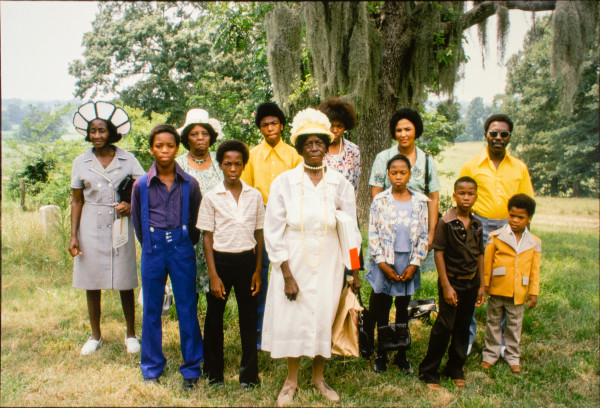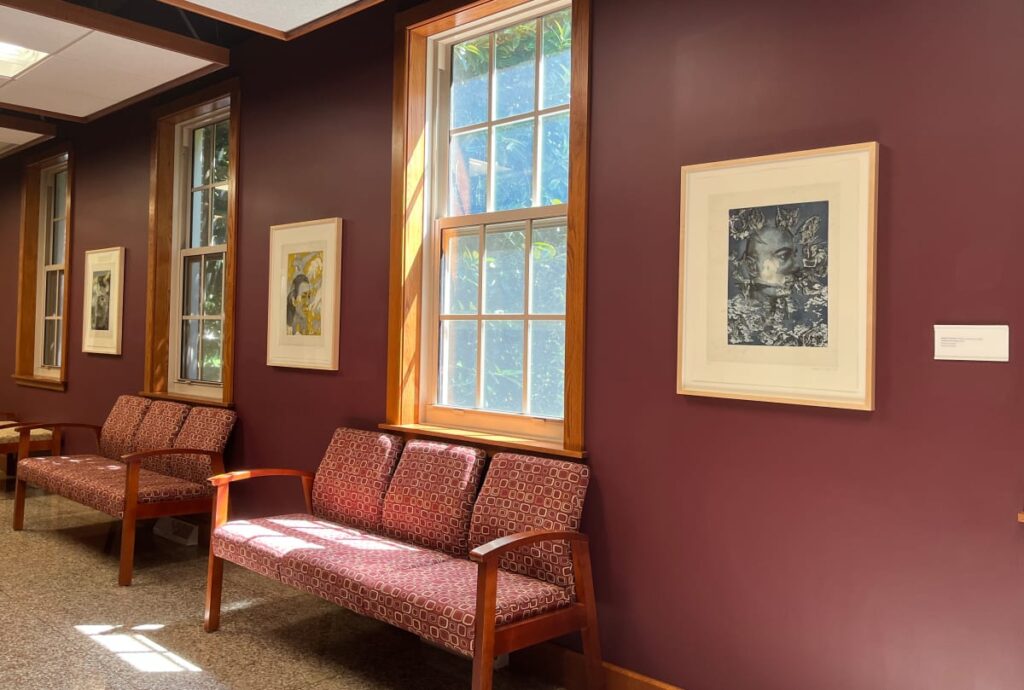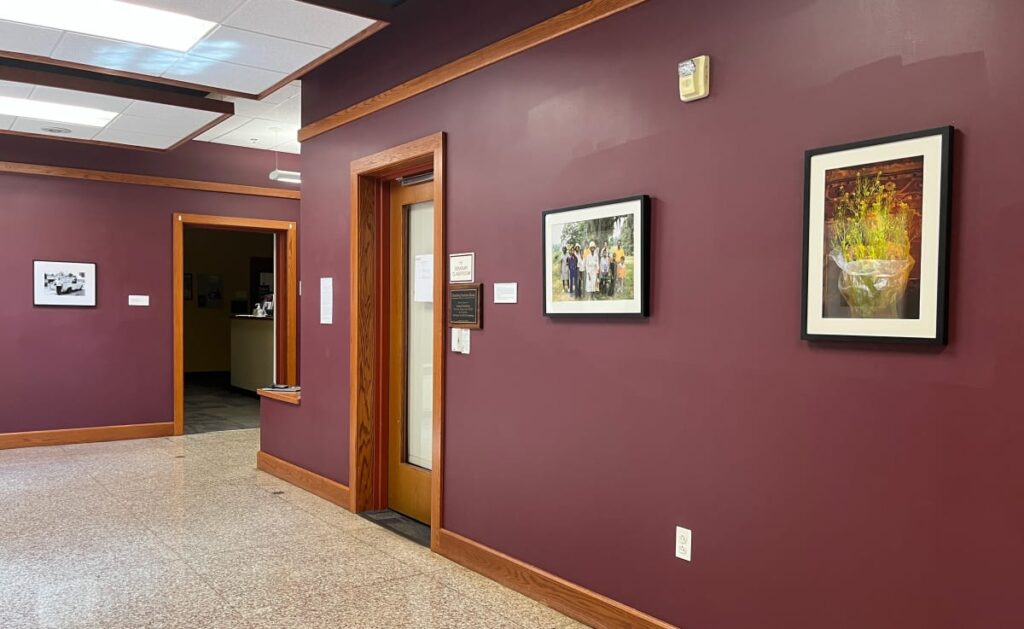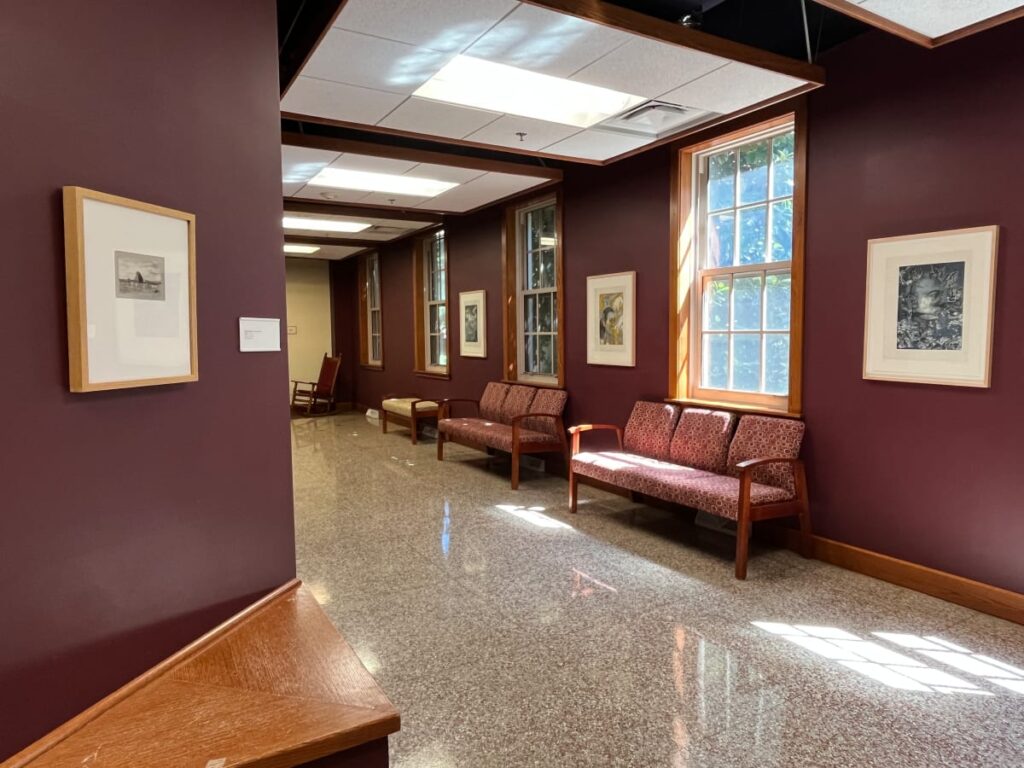Gallery interns Sarah Willoughby ’25 and Rory Mullis ’26 recently curated an exhibition for the lobby of the Cunningham Theater building on campus.
Religion is a performance. A performance of faith, of identity, and of culture. This performance can be used as an imposing force on others, or a way of expressing yourself and your history. Performance can be used to scare or encourage, to hate or comfort. Art often captures these performances, offering snapshots into real life and dream worlds, the spiritual and the tangible.
Our show started with alum William Ferris’ two works,” C.L. Redwine, Coahoma County” and “Lucindy McGriggs, Mary Gordon, John Henry Wright, Diane Wright Smith, Beatrice Wright McGowan, Alton McGowan, Summy Wright, Alfred Lee McGowan, Amanda Gordon, Mary McGowan, Robert McGowan, Marvin McGowan, Rose Hill Church, Fisher Ferry Road, Warren County.” These two photographs, both taken in the rural south, show two very different kinds of Christian performance. In C.L Redwine, we see a largely lettered looming threat plastered on a car, forcing all who pass by to see it. Though the white man standing in front is granted little context, we see his defiant glance and terrifying sign. This is a performance of faith meant to scare, intimidate, and control. Perhaps this is his way of performing his love for Christ, but for many, his method of communication would drive them away. In Lucindy McGriggs, Mary Gordon, etc… we see a very different kind of religious performance, one that is significantly more personal and reflective. A group of people are performing their faith in dresses, beads, and fancy hats; they’re putting on their Sunday best to worship their Lord.
Although our jumping off point was centered around Christianity, performance is a key part of many religions. In Nicholas Galanin’s “Dreaming in English,” a performance of faith is put into motion. This performance is not only spiritual, but also one of rebellious preservation of culture and customs. In Shahzia Sikander’s “Portrait of the Artist,” she inserts herself into the pilgrimage of the Prophet Mohammed to Mecca, known as the Miraj. Through a combination of imagery of herself and mystical imagery, we see how Sikander’s personal performance of identity, and her performance of Islam intertwine. In the work you can almost hear the song of the Miraj. Sikander presents her performance of her Islamic faith in the Western World, and how her performance at once influences these areas and is silenced by them.
Like any performance, spirituality, faith, and religion are used to convey a message, to open a part of oneself, and to share experiences of life with others. In “Pious Performance” there is no final bow, but a continuous representation of identity.
– Sarah Willoughby ’25 and Rory Mullis ’26
To look at all of the artworks in this exhibition, click here.




